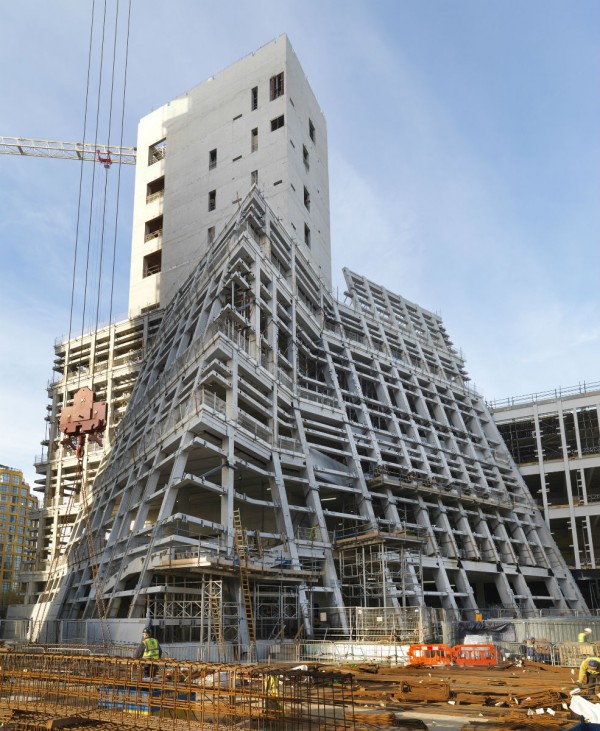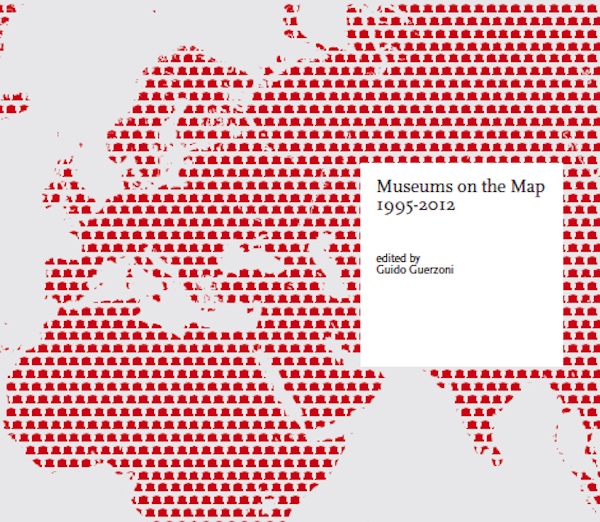

Just how many more museums do we need? The answer is not entirely clear to anyone, but museums keep sprouting across the world at great pace, surprisingly indifferent to sustained periods of economic crisis and slashed budgets.
Museums on the map, a survey that analyzes the so-called “museum boom,” takes 652 new museums and museum extensions, completed between 1995 and 2012, as case studies, exploring the “museomania” phenomenon from a statistical point of view. And the results yielded by the survey are certainly telling.
The geographical ratio, to begin with, is notable. Of the 652 new museums (understood as collecting institutions) created in the period, a whopping 315 were built in Europe despite its prolonged economic woes and pervading governmental cuts to cultural budgets. The US comes second in the ranking with 139 new museums built. Fifty were created in the rest of the Americas. Asia as a whole saw only 129 new institutions crop up during the period—less that half the amount in Europe—despite the region being poised as a major economical force and driver of the art market. Oceania and Africa round out the tally with 16 and five new museums, respectively.
Although Frank Gehry might spring to mind when pondering who might be the most sought-after architect in the museum realm (see “Fondation Louis Vuitton Is No Cookie-Cutter Structure“), it’s in fact the Japanese architect Tadao Ando—he of the impossibly elegant and minimal concrete forms—who gets the thumbs up with 23 buildings erected. The Italian Renzo Piano follows suit with 17 buildings, followed by the British architect David Chipperfield, with 11. Interestingly, 76 percent of the architects who designed all these museums were selected through a competition process, with just 24 percent having been directly appointed.
In terms of peak completion years, 2005 and 2008 top the race with 54 museums being finished in both. With September 2008 marking the start of the latest global economic crisis, unsurprisingly, less buildings have been completed in the years since.
The ratio of new builds to extensions is also intriguing: out of 652 case studies, a staggering 397 are new builds, to 255 expansions. And, in terms of categories, art reigns supreme: 170 of total became art museums, 102 became archeology and history museums, and only 36 were devoted to science and technology museums.
Museums on the map was kick-started by Guido Guerzoni, the project manager of M9, the €100 million initiative that will turn a cluster of buildings in the Venetian area of Mestre—including a 17th-century convent, a 1960s office building, and other new construction—into a museum devoted to the history and culture of the 20th century.
In the face of such a massive project and frustrated by the lack of substantial figures on museum construction budgets and cost overruns, he set himself on the task of gleaning that data, aided by a team of researchers and partners such as the Art Newspaper. Published by Umberto Allemandi & C. Museums on the map might have been born out of a specific practical need, but it has become a valuable tool to understand one of the key phenomena in contemporary cultural trends.

Museums in the map, 1995-2012, by Guido Guerzoni
Photo via: Ppan





